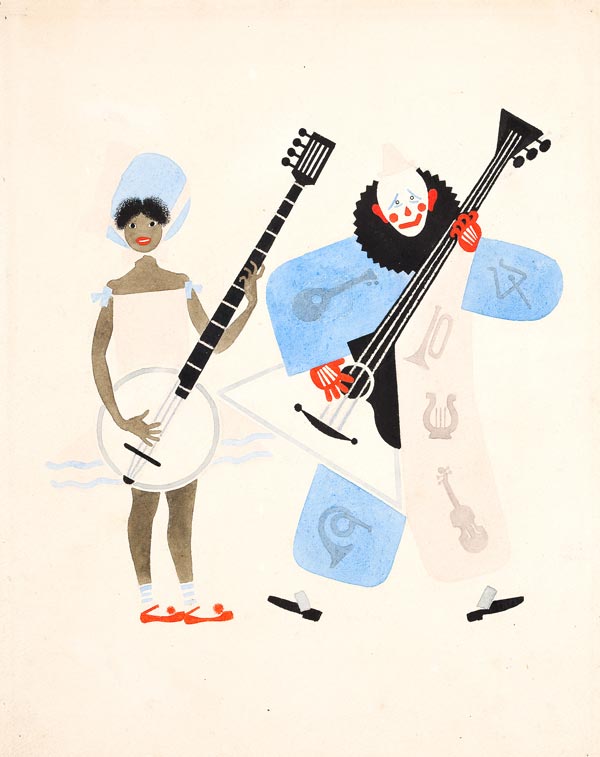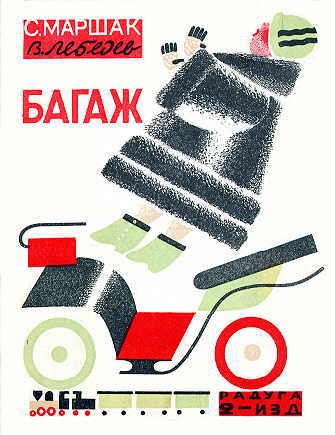
Constructivist graphic art

His use of space focuses the attention of the viewer. He simplifies the subject to basic shapes mostly geometrically and with just the barest of primary colors which helps the children to visually see. Beautifully done.
VLADIMIR LEBEDEV clown and clown. 1924. From the pictures. in the book.

Vladimir Lebedev Red Army and Navy. 1920. Gouache. 77 x 70,4
http://artinvestment.ru/en/news/exhibitions/20100514_lebedev.html

Artist Vladimir Lebedev
Cover
The webpage is the entire book.
http://www.chl.kiev.ua/ev/bagazh/ba_ob_e.htm
This site talks about Samuel Iakovlevich Marshak (1887-1964) who Lebedev collaborated on many of his illustrated books. Lebedev often "combined cubist techniques with the elements of folk 'lubok' in a highly original system of representation." 1
I like how he describes his inspiration about drawing for children's books that he borrowed from children's art. He also states that cubist techniques taught him discipline. His work shows that discipline clearly. What can we learn? Even though he was illustrating books to spread the superior communist message, he was loyal and good communist. We all have our country to be loyal too and to serve whether by designing or by other means. It is our duty to be sensible in that loyalty. He had to switch to a state-supported style in the 1930's which must have difficult Who knows what he may have accomplished in his techniques if allowed freedom of expression?
See more images at:
http://theanimalarium.blogspot.com/2009/08/revolutionary-animal-shapes-of-vladimir.html
![[lebedev-Slonyonok.jpg]](https://blogger.googleusercontent.com/img/b/R29vZ2xl/AVvXsEh5N_cHYdnl3l2bhg2jfgGAGmJu49qrYSu_QDFi0MawmvHjzp47NVy6EIPr3hAZH28MmiluOYzg-314YP2_R-iMFGuca4rFHSrnTUFDyLaN_b1S-7BHxpKforhyphenhyphen9lj8JIWxccM-XhiIab1O/s320/lebedev-Slonyonok.jpg)
No comments:
Post a Comment